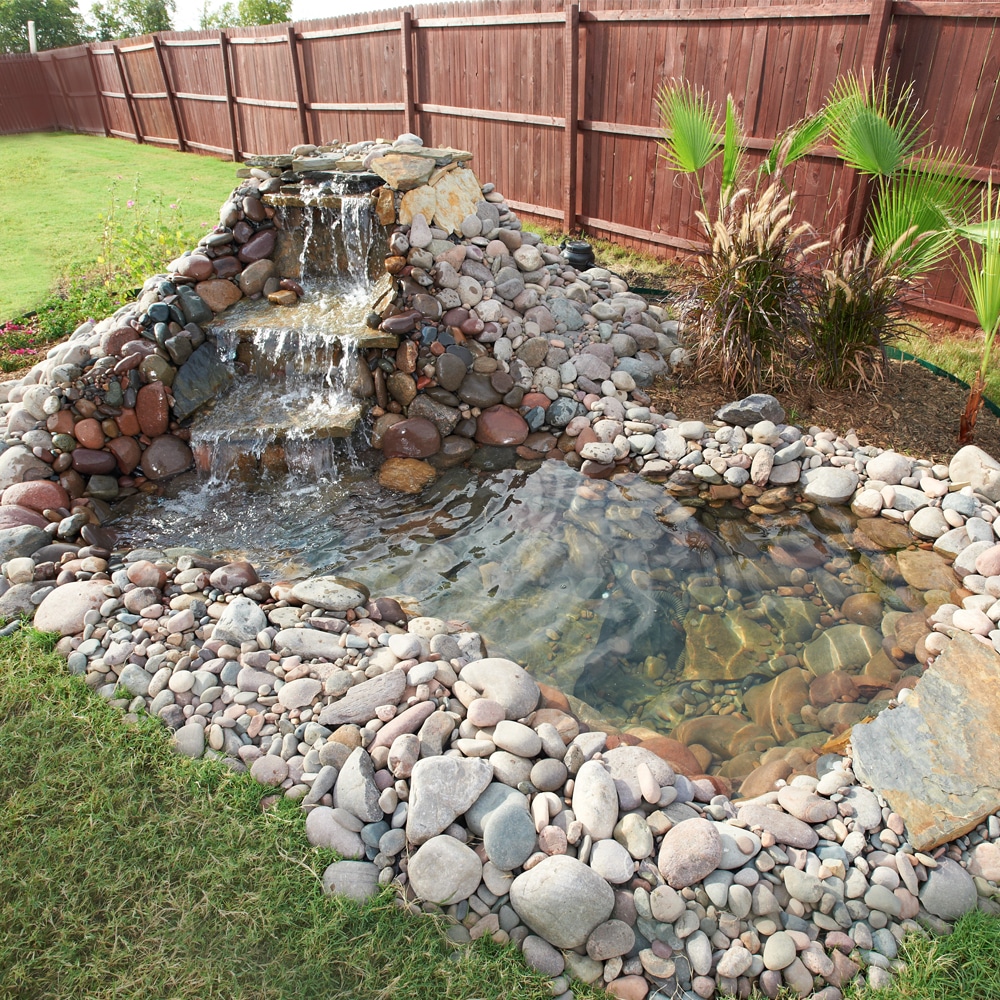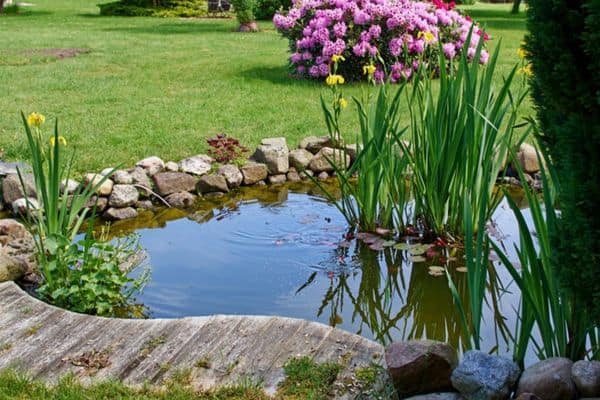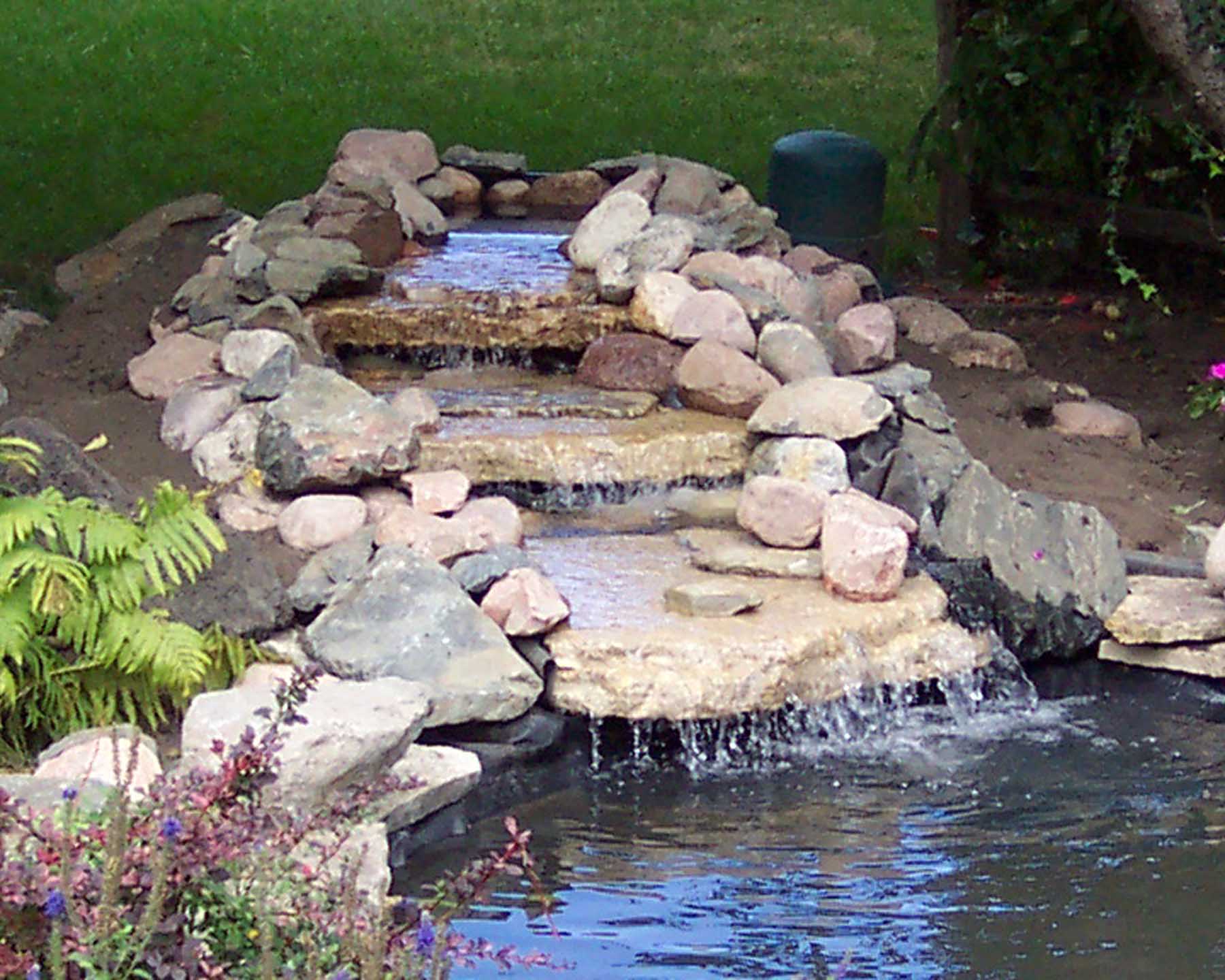Why a Garden Pond is a Great Addition to Your Outdoor Space
A well-designed garden pond can be a tranquil oasis, providing a peaceful retreat from the stresses of everyday life. Not only do garden ponds offer aesthetic appeal, but they also attract wildlife, such as birds and butterflies, and can even increase property value. When considering how to make a garden pond, it’s essential to think about the benefits it can bring to your outdoor space. A garden pond can be a source of joy for homeowners, providing a sense of serenity and connection to nature.
One of the primary advantages of a garden pond is its ability to attract a variety of wildlife. The sound of gently flowing water and the sight of aquatic plants can create a haven for birds, bees, and other beneficial insects. This can be especially beneficial for gardeners, as these visitors can help pollinate plants and control pests. Additionally, a garden pond can provide a unique opportunity for homeowners to observe and learn about the natural world.
In terms of property value, a well-designed garden pond can be a significant selling point. A beautifully landscaped pond can add visual appeal to a property, making it more attractive to potential buyers. Furthermore, a garden pond can be a unique feature that sets a property apart from others in the area.
When it comes to creating a peaceful atmosphere, a garden pond is hard to beat. The gentle sound of water and the sight of aquatic plants can create a sense of calm, making it the perfect spot to relax and unwind. Whether you’re looking to create a peaceful retreat or simply want to add some visual appeal to your outdoor space, a garden pond is an excellent choice.
So, if you’re considering how to make a garden pond, remember the numerous benefits it can bring to your outdoor space. From attracting wildlife to increasing property value, a well-designed garden pond can be a valuable addition to any home. By incorporating a garden pond into your landscape design, you can create a peaceful oasis that provides a sense of serenity and connection to nature.
Choosing the Perfect Location for Your Garden Pond
When it comes to building a garden pond, choosing the right location is crucial. A well-placed pond can be a beautiful addition to your outdoor space, while a poorly located one can be a maintenance nightmare. To ensure that your pond is a success, it’s essential to consider several factors when selecting a location.
One of the most critical factors to consider is sunlight. Most aquatic plants require at least six hours of direct sunlight per day to thrive. However, too much sunlight can lead to excessive algae growth, so it’s essential to find a balance. Consider the orientation of your garden and the amount of sunlight it receives throughout the day.
Drainage is another critical factor to consider when choosing a location for your garden pond. You’ll want to avoid areas with standing water or where water tends to collect. This can lead to erosion and other maintenance issues. Look for a spot with good drainage, and consider installing a French drain or other drainage system if necessary.
Accessibility is also an essential consideration when choosing a location for your garden pond. You’ll want to be able to easily access the pond for maintenance and upkeep. Consider the distance from your house and the path you’ll need to take to reach the pond. You’ll also want to ensure that the location is safe and secure, especially if you have children or pets.
To assess the terrain and choose the perfect location for your garden pond, start by walking your property and observing the lay of the land. Look for areas with good drainage and sunlight, and consider the accessibility of the location. You can also use a garden hose to mark out the area where you plan to build the pond, giving you a better sense of the space and how it will fit into your overall landscape design.
By carefully considering these factors, you can choose the perfect location for your garden pond and ensure that it becomes a beautiful and functional addition to your outdoor space. Remember to take your time and do your research, and don’t be afraid to seek advice from a professional if you’re unsure about any aspect of the process. With the right location and a little planning, you can create a stunning garden pond that will bring you joy for years to come.
Designing Your Garden Pond: Size, Shape, and Style
When it comes to designing a garden pond, there are several factors to consider to ensure that it complements the surrounding landscape and architecture. The size, shape, and style of the pond will all play a crucial role in determining its overall aesthetic appeal and functionality. In this section, we will explore the different design options available and provide tips on how to choose the perfect design for your garden pond.
The size of the pond will depend on the available space and the desired level of maintenance. A larger pond will require more maintenance, but it will also provide a more dramatic visual impact. A smaller pond, on the other hand, will be easier to maintain, but it may not have the same level of visual appeal. When deciding on the size of the pond, consider the overall scale of the garden and the surrounding landscape.
The shape of the pond is also an important consideration. A rectangular or square pond can provide a clean and modern look, while a circular or irregularly shaped pond can add a touch of whimsy and personality to the garden. Consider the style of the surrounding architecture and the overall aesthetic you want to achieve when choosing the shape of the pond.
The style of the pond will also depend on the surrounding landscape and architecture. A formal garden may require a more traditional or classical design, while a modern or contemporary garden may benefit from a more sleek and minimalist design. Consider the overall style of the garden and the surrounding architecture when choosing the style of the pond.
In addition to the size, shape, and style of the pond, there are several other design considerations to keep in mind. The depth of the pond will depend on the type of aquatic life you want to support, while the edges of the pond will require careful consideration to ensure that they are safe and secure. The surroundings of the pond will also require careful consideration, including the placement of plants, rocks, and other decorative features.
When designing a garden pond, it’s essential to consider the overall aesthetic appeal and functionality of the space. By taking the time to carefully consider the size, shape, style, and surroundings of the pond, you can create a beautiful and functional outdoor space that will provide years of enjoyment. Whether you’re looking to create a peaceful retreat or a dramatic visual impact, a well-designed garden pond can be a valuable addition to any garden.
Preparing the Site and Excavating the Pond
Once you have chosen the perfect location for your garden pond, it’s time to start preparing the site and excavating the pond. This is a crucial step in the process, as it will determine the overall shape and size of the pond. In this section, we will walk you through the process of preparing the site and excavating the pond, including marking out the area, removing debris, and digging the hole.
The first step in preparing the site is to mark out the area where you want to build the pond. Use a rope or hose to mark out the shape of the pond, taking into account the size and shape you want to achieve. Make sure to mark out the area carefully, as this will determine the overall shape of the pond.
Next, remove any debris or obstructions from the marked-out area. This may include rocks, trees, or other obstacles that could interfere with the excavation process. Use a shovel or other digging tool to remove any debris, and make sure to dispose of it properly.
Now it’s time to start excavating the pond. Use a shovel or backhoe to dig the hole, taking care to dig slowly and carefully to avoid damaging the surrounding soil or other underground structures. Make sure to dig the hole to the correct depth, taking into account the size and shape of the pond you want to build.
As you dig the hole, you may encounter different types of soil or obstacles that could interfere with the excavation process. For example, you may encounter rocky soil or underground pipes that need to be avoided. Use a shovel or other digging tool to carefully remove any obstacles, and make sure to take regular breaks to avoid fatigue.
Once you have finished excavating the pond, use a level to ensure that the hole is even and level. This is an important step, as it will determine the overall shape and size of the pond. Make any necessary adjustments to the hole, and then move on to the next step in the process.
By following these steps, you can prepare the site and excavate the pond for your garden pond. Remember to take your time and be careful, as this is a crucial step in the process. With the right preparation and excavation, you can build a beautiful and functional garden pond that will provide years of enjoyment.
Installing a Pond Liner and Pump System
A pond liner and pump system are essential components of a garden pond, as they help to maintain the water level and quality. In this section, we will explain the importance of a pond liner and pump system, and provide step-by-step instructions on how to install them.
A pond liner is a durable, waterproof material that lines the bottom and sides of the pond, preventing leaks and ensuring that the water level remains stable. There are several types of pond liners available, including EPDM, PVC, and concrete. When choosing a pond liner, consider the size and shape of your pond, as well as the type of water features and decorations you plan to include.
A pump system is necessary to circulate the water in the pond, providing oxygen and preventing stagnation. There are several types of pumps available, including submersible, external, and solar-powered pumps. When choosing a pump, consider the size of your pond, as well as the type of water features and decorations you plan to include.
To install a pond liner, begin by preparing the site and excavating the pond, as described in the previous section. Next, lay out the liner, ensuring that it is centered and evenly spaced. Use rocks or other weights to hold the liner in place, and then fill the pond with water.
To install a pump system, begin by selecting a suitable location for the pump, such as a nearby shed or garage. Next, connect the pump to the pond, using a hose or pipe to circulate the water. Make sure to follow the manufacturer’s instructions for installation and maintenance.
When installing a pond liner and pump system, it is essential to consider the plumbing and electrical connections. Make sure to use a qualified electrician to connect the pump to the electrical supply, and follow all safety precautions when working with electricity.
By installing a pond liner and pump system, you can create a beautiful and functional garden pond that will provide years of enjoyment. Remember to follow all safety precautions and manufacturer’s instructions when installing these components, and don’t hesitate to seek professional help if you are unsure about any aspect of the process.
Adding Water Features and Decorations
Once you have installed your pond liner and pump system, it’s time to think about adding water features and decorations to enhance the beauty and functionality of your garden pond. In this section, we will discuss the various options available, including fountains, waterfalls, and aquatic plants.
Fountains are a popular choice for garden ponds, as they add visual interest and create a soothing sound. There are many different types of fountains available, including solar-powered and electric fountains. When choosing a fountain, consider the size and shape of your pond, as well as the type of water features and decorations you plan to include.
Waterfalls are another popular choice for garden ponds, as they create a dramatic visual effect and add to the overall ambiance of the pond. There are many different types of waterfalls available, including small, self-contained units and larger, more complex systems. When choosing a waterfall, consider the size and shape of your pond, as well as the type of water features and decorations you plan to include.
Aquatic plants are a great way to add color and interest to your garden pond, while also providing a natural source of food for fish and other aquatic life. There are many different types of aquatic plants available, including water lilies, cattails, and irises. When choosing aquatic plants, consider the size and shape of your pond, as well as the type of water features and decorations you plan to include.
When adding water features and decorations to your garden pond, it’s essential to consider the maintenance and upkeep requirements. For example, fountains and waterfalls will require regular cleaning and maintenance to ensure they continue to function properly. Aquatic plants will also require regular maintenance, including pruning and fertilization.
By adding water features and decorations to your garden pond, you can create a beautiful and functional outdoor space that will provide years of enjoyment. Remember to consider the maintenance and upkeep requirements when choosing your water features and decorations, and don’t hesitate to seek professional help if you are unsure about any aspect of the process.
Maintenance and Upkeep: Keeping Your Garden Pond Healthy and Thriving
Regular maintenance and upkeep are essential to keeping your garden pond healthy and thriving. In this section, we will provide tips and advice on how to maintain and upkeep your garden pond, including regular cleaning, water testing, and algae control.
Regular cleaning is essential to maintaining a healthy and thriving garden pond. This includes removing debris and sediment from the pond, as well as cleaning the pump and filter system. It’s also important to test the water regularly to ensure that it is safe and healthy for aquatic life.
Water testing is an important part of maintaining a healthy and thriving garden pond. This includes testing the pH levels, ammonia levels, and nitrite levels of the water. By testing the water regularly, you can identify any potential problems and take steps to correct them before they become major issues.
Algae control is also an important part of maintaining a healthy and thriving garden pond. Algae can quickly take over a pond, causing it to become cloudy and unsightly. By using algae control products and techniques, you can keep your pond looking its best and prevent algae from becoming a problem.
In addition to regular cleaning, water testing, and algae control, there are several other things you can do to maintain and upkeep your garden pond. This includes monitoring the pond’s water level, checking the pump and filter system regularly, and making any necessary repairs or replacements.
By following these tips and advice, you can keep your garden pond healthy and thriving for years to come. Remember to always follow the manufacturer’s instructions for any products or equipment you use, and don’t hesitate to seek professional help if you are unsure about any aspect of the process.
Enjoying Your New Garden Pond: Tips for Relaxation and Recreation
Congratulations on completing your garden pond Now it’s time to enjoy the fruits of your labor and make the most of this new outdoor feature. In this section, we will provide tips on how to create a peaceful atmosphere, attract wildlife, and use the pond for recreation and relaxation.
Creating a peaceful atmosphere around your garden pond is essential for relaxation and recreation. Consider adding comfortable seating areas, such as benches or hammocks, where you can sit and enjoy the surroundings. You can also add plants and flowers around the pond to create a natural and serene ambiance.
Attracting wildlife to your garden pond can be a fun and rewarding experience. Consider adding a bird feeder or bird bath to attract birds and other wildlife. You can also add a few fish to the pond to create a natural ecosystem.
Using the pond for recreation and relaxation is one of the best ways to enjoy your new outdoor feature. Consider adding a small boat or raft to the pond, where you can sit and enjoy the surroundings. You can also add a few water features, such as a fountain or waterfall, to create a soothing sound.
Making the most of your garden pond requires a little creativity and imagination. Consider hosting a garden party or BBQ around the pond, where you can invite friends and family to enjoy the surroundings. You can also add a few outdoor games, such as croquet or bocce ball, to create a fun and recreational atmosphere.
By following these tips, you can create a peaceful and enjoyable atmosphere around your garden pond. Remember to always follow safety precautions and maintenance tips to ensure that your pond remains healthy and thriving.






